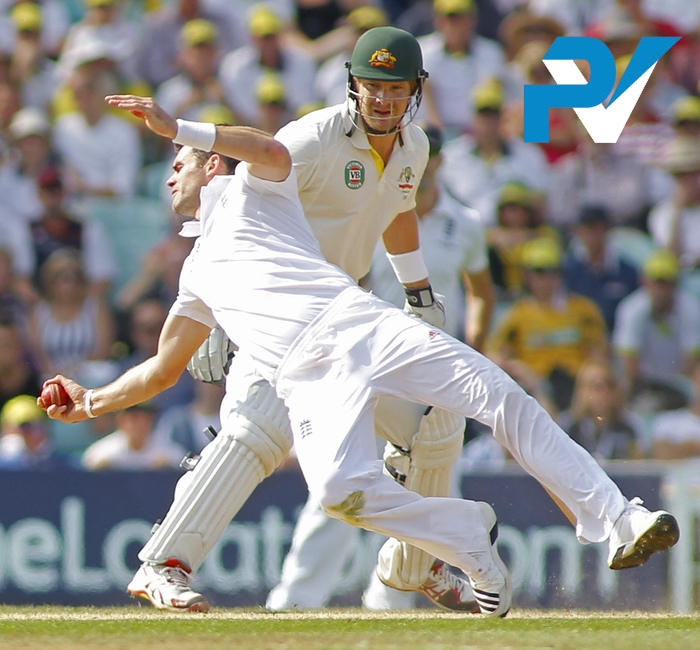How to Improve Cricket Hand-Eye Coordination
 How many times have you thought "just watch the ball"?
How many times have you thought "just watch the ball"?
While it's a useful shorthand for having good eye to hand coordination, the truth is a lot more complex than simply keeping your eye on the ball. Of course, it's not an error to try and watch the ball. It's just that there is also a lot more you can do to get better at hitting, catching and stopping the ball too.
We can make this easy by breaking it down into direct and indirect ways.
Fancy hand-eye training tricks
You have probably seen fancy training aids for improving vision. Most people think of the pegboards and plastic circles with coloured balls as for either professionals or a load of nonsense. The truth is that there is some evidence that the methods work, but indirectly.
When you do any kind of eye training, you are working to maintain your general hand-eye coordination. You are not exactly getting better at hitting a cricket ball with a bat, but you are certainly not getting worse. If you just let time pass, your skill will deteriorate with age.
Of course, it's not as powerful as more direct methods because it's more general. Just like you would work to build up your general fitness, you can also build up your general visual skills. There is some crossover as long as you do the specific work too.
By now, you might be thinking you should rush out and buy visual training aids. And while you can do that if you wish, you can also get similar benefits from other areas without having to buy specialist gear. Or, to put it another way, you can play computer games.
There are many specialist apps and programs for phones and PCs that look to keep your eyes sharp. And even playing video games is helpful. It's been shown clearly that gamers - especially those who play first person shooters - have sharp hand-eye skills and are able to make fast decisions under pressure.
So, you can get fancy just by playing on the Xbox!
Cricket hand-eye coordination
With a good base maintained with general training you can get more specific with cricket.
The key to this is is to put yourself in situations that allow you to learn both the ball's movement, and the cues of where the ball might go. In other words, watching the ball and anticipating the ball
Watching the ball is a matter of working out your focus. Experiment with both broad and narrow focus when batting in the nets or doing fielding drills. You will soon spot which way to go. You can the up the volume of practice where you can get a clear view of the ball. The trick is to make it as close to the game as possible. That means matching things like,
- Sightscreens when batting
- Bowler type when batting (spin, seam, left arm, right arm, height, unusual actions)
- Background when catching
- Ball size, colour and weight
- Surface for batting and fielding
The idea is to get a lot of balls that are the same as a game so when it happen in a match, your subconscious mind is in full control and you put the skill into action without thinking about it. You don't have to perfectly reflect the game situation, but the closer you get, the more experience you build up over time.
A word of caution here too. There is the general idea that this kind of mastery takes "10,000 hours". This is true that on average a great master takes this long to achieve high skill levels, but the reality is some take much less time and others take much more. The important thing to note is you can never get enough volume when it comes to this kind of practice.
In short, catch and hit a lot of balls then review how it went!
Using anticipation to improve hand-eye coordination
The second part of cricket specific eye to hand training is your anticipation skills. If you imagine your balll watching skills to be the base, your anticipation skills take you up a level. You are not just seeing the ball well, you are using your experience to know what will; happen before it happens.
You are seeing the future.
The classic cricket example of anticipation is facing fast bowling. It's well know that at high speed we cannot just rely on picking up the ball because reactions are not fast enough. Instead the batsman uses visual cues from the bowler to predict the line and length before letting experience take over and playing the shot. You can do similar things with fielding.
The first way is by playing a lot of cricket. This will build your experience, especially as you review your performance over time. you can also do anticipation training that is cricket specific,
- Fielding drills where the feeder plays real batting shots
- Facing real bowling in the nets of the right standard
- Facing lower pace bowling from 18 yards, or facing the sidearm
In the end, don't sweat it too much. It's complex, but playing mindful cricket will help more than anything else. Keep it as realistic as you can and build up your skills beyond technique.
- Login to post comments

